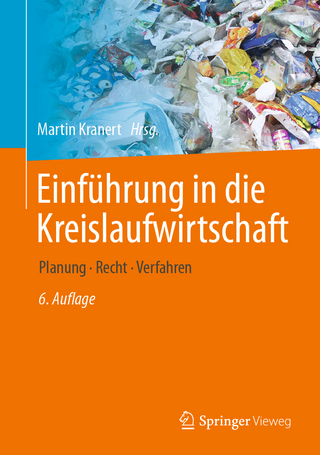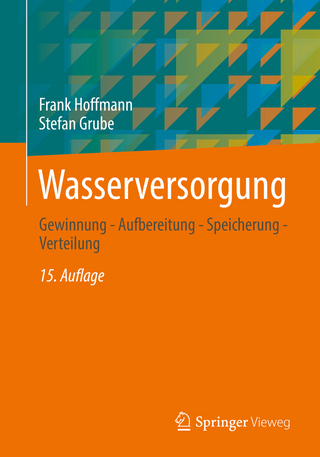
Organizing Nature
University of Toronto Press (Verlag)
978-1-4875-9485-5 (ISBN)
- Lieferbar (Termin unbekannt)
- Versandkostenfrei innerhalb Deutschlands
- Auch auf Rechnung
- Verfügbarkeit in der Filiale vor Ort prüfen
- Artikel merken
Organizing Nature explores how the environment is organized in Canada’s resource-dependent economy. The book examines how particular ecosystem components come to be understood as natural resources and how these resources in turn are used to organize life in Canada.
In tracing transitions from "ecosystem component" to "resource," this book weaves together the roles that commodification, Indigenous dispossession, and especially a false nature-society binary play in facilitating the conceptual and material construction of resources. Alice Cohen and Andrew Biro present an alternative to this false nature-society binary: one that sees Canadians and their environments in a constant process of making and remaking each other. Through a series of case studies focused on specific resources – fish, forests, carbon, water, land, and life – the book explores six channels through which this remaking occurs: governments, communities, built environments, culture and ideas, economies, and bodies and identities.
Ultimately, Organizing Nature encourages readers to think critically about what is at stake when Canadians (re)produce myths about the false separation between Canadian peoples and their environments.
Alice Cohen is a professor in the Departments of Earth and Environmental Science and the Environmental and Sustainability Studies program at Acadia University. Andrew Biro is a professor in the Department of Politics at Acadia University.
List of Illustrations and Tables
List of Maps
List of Boxes
Acknowledgments
Abbreviations
1. Introduction
1.1 From How to Why
1.2 From Ecosystem Components to Resources
1.3 Politics beyond Policy
1.4 Resourcification through Six Channels
1.5 Book Outline and Common Themes
Discussion Questions
2. Channels: From Ecosystem Components to Resources
2.1 Introduction
2.2 Governments
2.3 Communities
2.4 Built Environments
2.5 Culture and Ideas
2.6 Economies
2.7 Bodies and Identities
2.8 Summary and Conclusions
Discussion Questions
3. From Fish to Fisheries
3.1 Introduction
3.2 Salmon in British Columbia
3.3 Cod in Newfoundland and Labrador
3.4 Channels in Action: Organizing Fisheries
3.5 Summary and Conclusions
Discussion Questions
Pedagogical Resources
4. From Forests to Timber
4.1 Introduction
4.2 Growth of Timber: Saint John, New Brunswick
4.3 Trees, Not Timber: Port Renfrew, British Columbia, and Darkwoods
4.4 Channels in Action: Organizing Forests
4.5 Summary and Conclusions
Discussion Questions
Pedagogical Resources
5. From Carbon to Energy
5.1 Introduction
5.2 Coal in Nova Scotia
5.3 Oil and Bitumen in Alberta
5.4 Natural Gas and Fracking
5.5 Channels in Action: Organizing Carbon
5.6 Summary and Conclusions
Discussion Questions
Pedagogical Resources
6. From H2O to Water
6.1 Introduction
6.2 Diversions and Damming
6.2.1 Diversion
6.2.2 Damming
6.3 Drinking Water
6.3.1 Vancouver, 2006
6.3.2 Walkerton, Ontario, 2000
6.3.3 Asubpeechoseewagong Netum Anishinabek–Grassy Narrows, Ontario, 1962–?
6.3.4 Drinking Water: Summary
6.4 Channels in Action: Organizing Water
6.5 Summary and Conclusions
Discussion Questions
Pedagogical Resources
7. From Land to Property
7.1 Introduction
7.2 Soil
7.3 Symbol
7.4 Space
7.5 Channels in Action: Organizing Land
7.6 Summary and Conclusions
Discussion Questions
Pedagogical Resources
8. From Bodies to Life
8.1 Introduction
8.2 Wild(?)life: Non-Human Animals
8.2.1 Pets and Other Companion Species
8.2.2 Fish and Game: Wildness as Economic Resource
8.2.3 Parks as Spaces for Wildlife
8.3 Human Resources
8.3.1 Blood and Plasma
8.3.2 Surrogacy
8.4 The Channels in Action: Organizing Life
8.5 Summary and Conclusions
Discussion Questions
Pedagogical Resources
9. Resources: Organized and Organizers
9.1 Channels in Action
9.2 Common Themes
9.2.1 Commodification
9.2.2 Indigenous Dispossession
9.2.3 Artificial Nature–Society Binary
9.3 Why Does ‘Resource Thinking’ Matter?
9.3.1 Winning and Losing
9.3.2 Why Is It Important to Think beyond Policy?
Glossary
References
Index
| Erscheinungsdatum | 09.08.2023 |
|---|---|
| Zusatzinfo | 12 b&w illustrations, 13 b&w maps, 2 b&w figures, 2 b&w tables |
| Verlagsort | Toronto |
| Sprache | englisch |
| Maße | 156 x 235 mm |
| Gewicht | 510 g |
| Themenwelt | Naturwissenschaften ► Biologie ► Ökologie / Naturschutz |
| Naturwissenschaften ► Geowissenschaften ► Geografie / Kartografie | |
| ISBN-10 | 1-4875-9485-2 / 1487594852 |
| ISBN-13 | 978-1-4875-9485-5 / 9781487594855 |
| Zustand | Neuware |
| Informationen gemäß Produktsicherheitsverordnung (GPSR) | |
| Haben Sie eine Frage zum Produkt? |
aus dem Bereich


